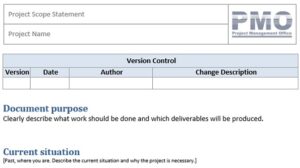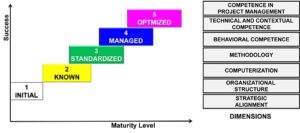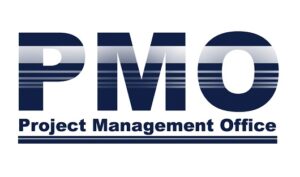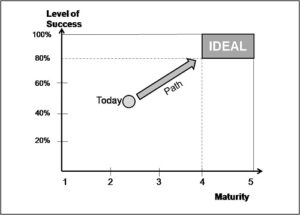In the evolving landscape of projects, PMBOK® Guide 8th Ed. shifts its focus towards project management performance domains that are essential for achieving successful project outcomes. These domains represent a modern approach, moving beyond traditional methodologies to ensure projects deliver tangible value and align with business strategies.
At the heart of this shift are the seven Project Management Performance Domains, which define how effective project management integrates governance, strategy, people, and adaptability to create measurable business value.
This article explains what each domain represents, why it matters, and how to apply them in real-world projects.
Why PMBOK 8 Introduced Performance Domains
In previous editions, the PMBOK Guide was structured around process groups and knowledge areas. While useful, many organizations found this approach too procedural and less adaptable to agile and hybrid realities.
The PMBOK 8th Edition redefines the foundation of project management by emphasizing performance over process.
The new structure revolves around seven Performance Domains, which collectively describe the areas of competence and results required for project success. Instead of prescribing step-by-step actions, PMBOK 8 helps project professionals think strategically, deliver value, and adapt practices to their specific context.
The Purpose of Performance Domains
Performance Domains provide a holistic view of what drives success in a project. They ensure the project delivers intended outcomes, remains aligned with organizational strategy, and creates sustainable value for stakeholders.
Each domain is interdependent. Governance shapes decisions, scope defines purpose, stakeholders drive alignment, and risks influence adaptability.
By balancing these elements, project managers can maintain a steady focus on performance rather than mere compliance and translate strategic initiatives into actionable plans. This alignment not only helps in effective resource allocation but also in maintaining a clear focus on delivering real value to stakeholders.
Performance domains emphasize a structured approach, guiding teams to optimize processes, manage risks, and engage stakeholders effectively. This results in projects that not only meet their objectives but also contribute significantly to the business’s bottom line.
Ultimately, these domains ensure that projects are more than just completed tasks; they are strategic endeavors that drive growth and success.
The Seven Project Management Performance Domains
The Seven Performance Domains outlined in PMBOK 8 serve as the backbone of effective project management, each playing a crucial role in delivering success and value. These domains provide a comprehensive framework to ensure projects are not only on track but also aligned with strategic objectives. Below is an overview of each and how it contributes to successful delivery.
1. Governance Domain
The Governance domain ensures that decisions and actions are ethical, transparent, and aligned with organizational objectives. It defines the decision-making framework, roles, and accountability within a project.
Good governance establishes trust, clarity, and compliance—vital for managing resources effectively and ensuring the project contributes to business goals.
Key practices:
- Define roles and responsibilities clearly.
- Align governance structures with organizational strategy.
- Maintain transparency and ethical standards in all decisions.
2. Scope Domain
The Scope domain focuses on delivering value through outcomes, not just completing deliverables.
PMBOK 8 encourages project teams to move beyond the traditional “scope baseline” and adopt a value-oriented approach—asking why each deliverable matters and how it contributes to stakeholder satisfaction.
Key practices:
- Engage stakeholders early to define value-driven scope.
- Continuously validate deliverables against desired outcomes.
- Adapt scope as value priorities evolve.
3. Schedule Domain
The Schedule domain promotes adaptive planning to handle uncertainty and complexity, involves planning timelines and milestones to keep the project on time.
Rather than treating the schedule as a static artifact, PMBOK 8 recommends iterative updates that reflect new insights and environmental changes.
Key practices:
- Combine predictive and adaptive scheduling methods.
- Focus on milestones that reflect business value.
- Use tools like Kanban or Gantt for visibility and control.
4. Finance Domain
The Finance domain focuses on budgeting, financial planning, ensuring cost efficiency and connecting financial management with value delivery. It’s not just about cost control—it’s about ensuring that every dollar invested generates measurable benefits.
Key practices:
- Evaluate project investments through value realization.
- Balance cost efficiency with long-term impact.
- Monitor financial performance using Earned Value or similar metrics.
5. Stakeholder Domain
Stakeholders are the foundation of project success and involves identifying, managing, and engaging those who have an interest or stake in the project. The Stakeholder domain emphasizes continuous engagement, communication, and collaboration to maintain alignment and trust.
Key practices:
- Map and prioritize stakeholders by influence and interest.
- Communicate transparently using tailored approaches.
- Build partnerships instead of transactional relationships.
6. Resource Domain
The Resource domain manages human, physical, and technical resources necessary for project execution and focuses on human performance and collaboration. It recognizes that people are the key assets of any project and that motivation, diversity, and empowerment drive success.
Key practices:
- Develop leadership and interpersonal skills within teams.
- Foster a psychologically safe environment.
- Allocate resources based on competency and workload balance.
7. Risk Domain
The Risk domain addresses uncertainty management. It promotes proactive identification of potential risks, its analysis, and developing response strategies that protect project objectives and exploit opportunities.
Key practices:
- Integrate risk thinking into decision-making.
- Use both qualitative and quantitative analysis.
- Turn uncertainty into advantage through adaptive strategies.
Each domain is interconnected, contributing to a holistic approach that enhances project outcomes and ensures alignment with business objectives.
How Performance Domains Improve Project Outcomes
Project management performance domains, as outlined in PMBOK 7, are crucial in steering projects toward success by creating a structured approach for project delivery. These domains offer a comprehensive framework that guides project managers in aligning efforts with strategic objectives and ensuring that all aspects of a project are meticulously managed.
By focusing on key areas such as scope, schedule, and resources, performance domains provide clarity and direction. This ensures that project activities are aligned with the intended business value. Moreover, they promote consistency in processes and decision-making, which reduces the likelihood of errors and rework.
Effective application of these domains also fosters proactive risk management. By anticipating potential challenges and addressing them early, teams can minimize disruptions and maintain project momentum. Furthermore, engaging stakeholders effectively within these domains enhances collaboration and support, leading to more successful project outcomes.
In essence, the integration of performance domains within project management practices not only streamlines operations but also enhances the quality and value of deliverables, ultimately leading to improved project outcomes.
This approach encourages teams to tailor their methods while keeping an eye on strategic objectives, stakeholder needs, and value realization.
Organizations adopting PMBOK 8’s performance framework report:
- Stronger alignment between projects and business strategy.
- Improved stakeholder satisfaction.
- Increased agility in responding to change.
- Better value measurement and delivery.
From Process-Based to Value-Driven Project Management
PMBOK 8 represents a philosophical transformation: project management is no longer about compliance—it’s about delivering measurable value.
The traditional checklist mentality gives way to a principles and performance based mindset, integrating modern practices from agile, hybrid, and predictive approaches.
This shift is aligned with PMI’s Value Delivery System, which connects portfolios, programs, and projects in a dynamic ecosystem. Project success is now measured not just by schedule or cost, but by how well it advances strategic goals and stakeholder outcomes.
Applying the Project Management Performance Domains in Practice
The practical application of performance domains is essential for bridging the gap between theoretical knowledge and real-world project management. Project managers can tailor these domains to fit the specific needs of their projects, ensuring alignment with organizational objectives. By understanding and applying these domains, managers can effectively govern projects, manage scope and schedule, control finances, and address stakeholder needs.
For example, in a construction project, the scope domain can help define the project’s boundaries, while the risk domain can identify potential hazards early. This proactive approach ensures timely delivery and resource optimization.
Continuous improvement plays a crucial role in the practical application of performance domains. By regularly evaluating outcomes and processes, project teams can identify areas for enhancement. This iterative process promotes better decision-making and fosters a culture of learning and adaptation. As a result, projects become more resilient to changes and challenges.
Ultimately, effectively applying performance domains leads to improved project outcomes, delivering tangible business value and fostering organizational growth.
To implement the seven domains effectively:
- Start with governance – clarify decision structures and authority.
- Engage stakeholders early – define what “value” means to them.
- Balance scope, time, and finance – always tie back to strategic value.
- Empower your team – enable autonomy, accountability, and collaboration.
- Integrate risk and learning loops – adapt proactively, not reactively.
Using tools like ClickUp, MS Project, or Jira, combined with templates and lessons from the Escritório de Projetos or PMI, can accelerate maturity and success.
Frequently Asked Questions
As you explore the concept of Project Management Performance Domains, you might have several questions. Here are some common inquiries, along with clarifications on PMBOK 8’s approach:
Q: What are performance domains in project management?
A: Performance domains are areas of focus that collectively lead to effective project management, helping align strategy, delivery, and value creation.
Q: How does PMBOK 8 differ from previous editions regarding performance domains?
A: PMBOK 8 emphasizes a holistic approach to project management by integrating performance domains, moving beyond just processes to focus on outcomes and value.
Q: Why are performance domains important?
A: They provide a framework for aligning project activities with organizational goals, ensuring that projects deliver sustainable business outcomes.
Q: How can I apply performance domains to my project?
A: Begin by identifying the key domains relevant to your project, then develop strategies to address each, ensuring alignment with overall project objectives.
These insights into performance domains and PMBOK 8’s approach can guide you in effectively managing projects to deliver real value.
Conclusion: The Future of Project Performance
The PMBOK 8th Edition is not merely an update—it’s a new paradigm for managing work and delivering outcomes that matter.
The seven Project Management Performance Domains redefine excellence, guiding professionals to integrate ethics, agility, and value creation in every project.
Project managers who master these domains will not just deliver on time—they will deliver with purpose, adaptability, and impact.
Consider integrating these performance domains into your project management practices to elevate your projects to new heights. Start today, and see the difference it makes in delivering exceptional business outcomes.
Call to Action:
References
Project Management Institute (PMI). A Guide to the Project Management Body of Knowledge (PMBOK® Guide) – Eighth Edition. Newtown Square, Pennsylvania, USA: Project Management Institute, 2025. PMBOK Guide 8: The New Era of Value-Based Project Management. Available at: https://projectmanagement.com.br/pmbok-guide-8/
Disclaimer
This article is an independent educational interpretation of the PMBOK® Guide – Eighth Edition, developed for informational purposes by ProjectManagement.com.br. It does not reproduce or redistribute proprietary PMI content. All trademarks, including PMI, PMBOK, and Project Management Institute, are the property of the Project Management Institute, Inc. For access to the complete and official content, purchase the guide from Amazon or download it for free at https://www.pmi.org/standards/pmbok if you are a PMI member.






One Response